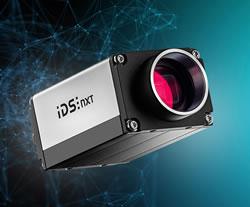Torc Robotics releases self-driving system capability list
Torc Robotics today released a list of capabilities of its self-driving system for consumer cars, named Asimov. The list includes behavioral competencies recommended by the National Highway Traffic Safety Administration (NHTSA) for automated driving systems.
Torc Robotics today released a list of capabilities of its self-driving system for consumer cars, named Asimov. The list includes behavioral competencies recommended by the National Highway Traffic Safety Administration (NHTSA) for automated driving systems.
"In an industry filled with persuasive marketing, it can be difficult to know the state of technology," said Torc Robotics CEO Michael Fleming. "We hope by publishing this list, we can help set expectations for the technology and promote the standardization of self-driving terminology. We hope others will follow suit."
Torc has been describing one capability each day on its website since November 6. Previously announced capabilities include animal collision avoidance, performing turns with traffic, and reacting to congested intersections, among others.
"We want automotive and supplier decision makers to have the right information for informed choices," said Fleming. "That can be hard to do when each firm discusses complex driving scenarios in different ways. Our list offers concrete, easy-to-understand tests of our systems capabilities."
Torc recently announced that it will conduct demonstrations of its complete self-driving system at CES 2018. Torc vehicles will drive on public roads in downtown Las Vegas, confronting dense traffic, complex intersections, pedestrians, high-speed merges, and lane changes.
Asimov self-driving car system list of capabilities*
(Available for download here)
Road conditions
1. Follow lane lines
2. Navigate on roads without lane lines
3. Drive at night on highways
4. Drive at night in urban environments
5. Drive through the rain on highways
6. Drive through the rain in urban environments
7. Drive over bridges
8. Navigate tunnels
9. Detect and respond to speed limit changes and speed advisories
10. Obey access restrictions (one way, no turn, ramps, etc.)
Traffic maneuvers
11. Reduce speed for merging vehicles
12. Adjust speed for lane changes
13. Autonomous passing across multiple lanes of traffic
14. Slow or stop for car braking in front
15. Perform high-speed merges
16. Perform low-speed merges
17. Perform vehicle following in stop-and-go traffic
18. Pass slow vehicles
19. Perform U-turns
20. Detect and respond to motorcyclists
21. Respond to unexpected maneuvers by other vehicles
Intersections
22. Perform turns within traffic
23. Navigate intersections
24. Detect and respond to traffic lights
25. Respond to vehicle breaking rules at traffic lights
26. Obey 2-way stops with cross traffic
27. Obey the rules at 3-way stops
28. Obey traffic light turn arrows
29. Provide safe distance from pedestrians
30. Obey crosswalks
General system capabilities
31. Multi-sensor tracking
32. Follow local and state driving laws
33. Detect and respond to component failures
34. Classify objects and people
35. Animal collision avoidance
*List reflects Asimov self-driving car system capabilities as of the date listed above. Torc is continuously testing the system and adding capabilities.
About Torc Robotics
Torc Robotics, headquartered in Blacksburg, Virginia, provides end-to-end self-driving solutions across multiple industries, including automotive, mining, and defense. Founded in 2005, Torc has integrated its components and systems on ground vehicles ranging from consumer SUVs to 300-ton mining trucks-in safety-critical environments. Torc first gained notice when it developed the self-driving software stack for Virginia Tech in the 2007 DARPA Urban Challenge. As one of three winners of the DARPA Urban Challenge, Torc has commercialized this technology through partnerships with original equipment manufacturers (OEMs) and their Tier 1 suppliers.
Featured Product

3D Vision: Ensenso B now also available as a mono version!
This compact 3D camera series combines a very short working distance, a large field of view and a high depth of field - perfect for bin picking applications. With its ability to capture multiple objects over a large area, it can help robots empty containers more efficiently. Now available from IDS Imaging Development Systems. In the color version of the Ensenso B, the stereo system is equipped with two RGB image sensors. This saves additional sensors and reduces installation space and hardware costs. Now, you can also choose your model to be equipped with two 5 MP mono sensors, achieving impressively high spatial precision. With enhanced sharpness and accuracy, you can tackle applications where absolute precision is essential. The great strength of the Ensenso B lies in the very precise detection of objects at close range. It offers a wide field of view and an impressively high depth of field. This means that the area in which an object is in focus is unusually large. At a distance of 30 centimetres between the camera and the object, the Z-accuracy is approx. 0.1 millimetres. The maximum working distance is 2 meters. This 3D camera series complies with protection class IP65/67 and is ideal for use in industrial environments.
